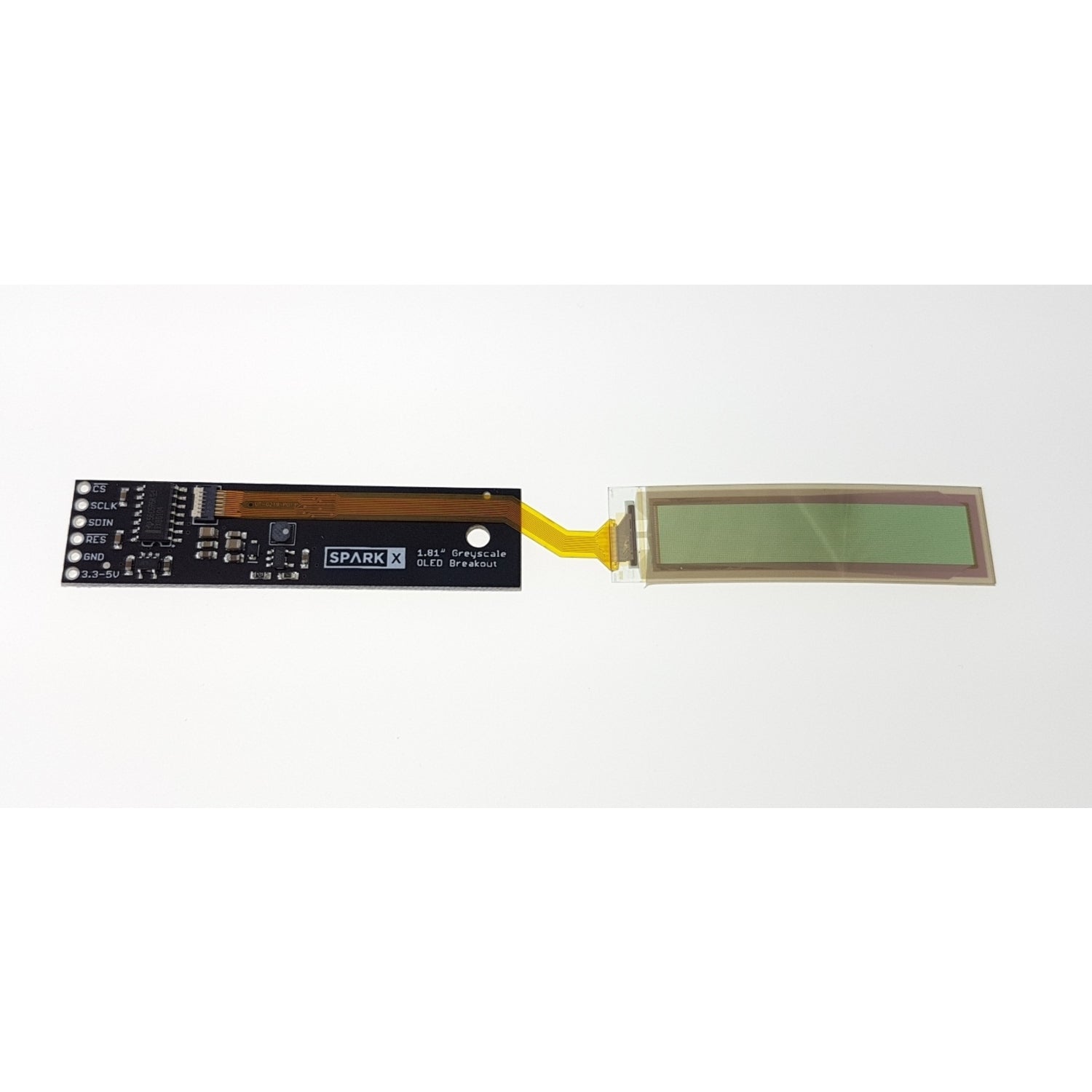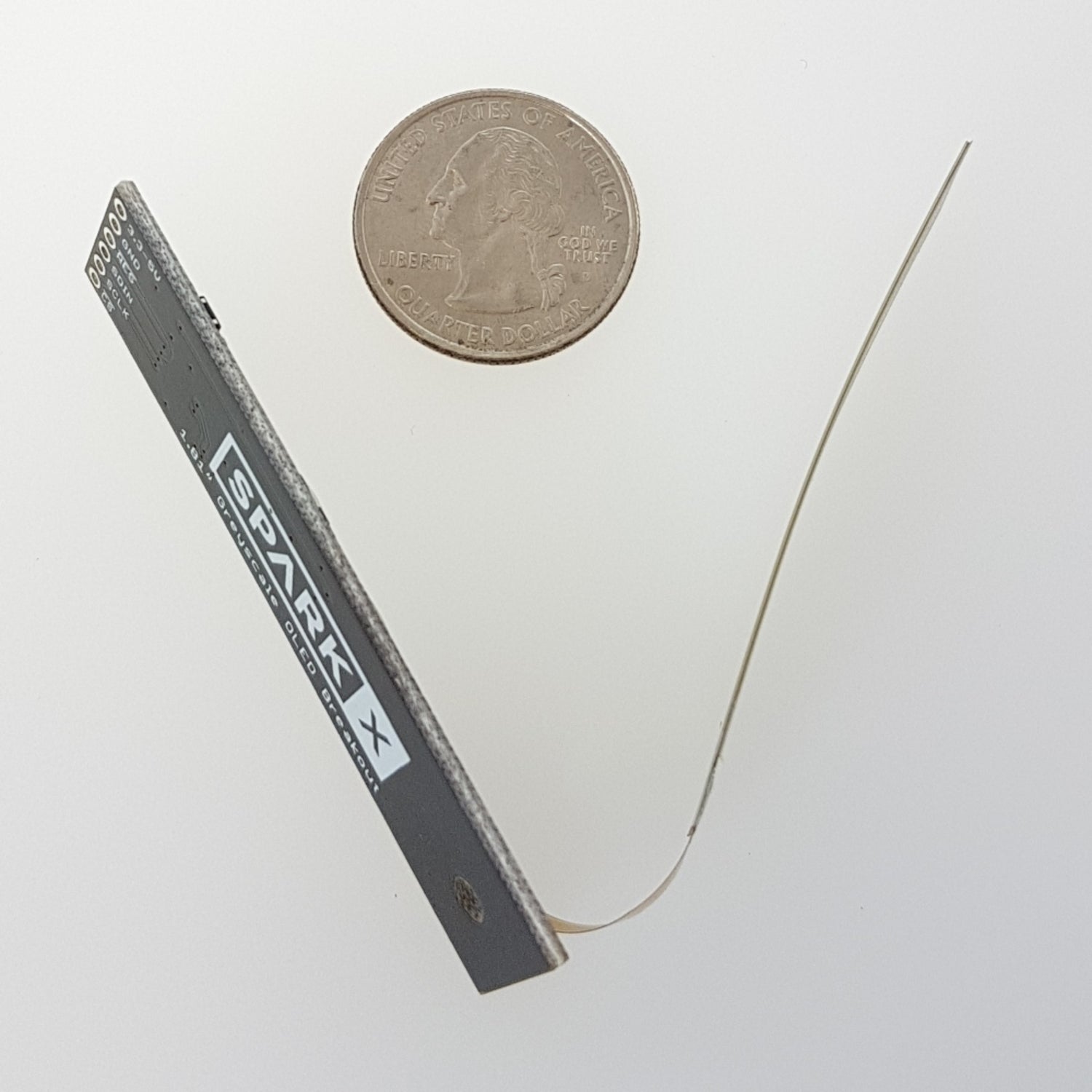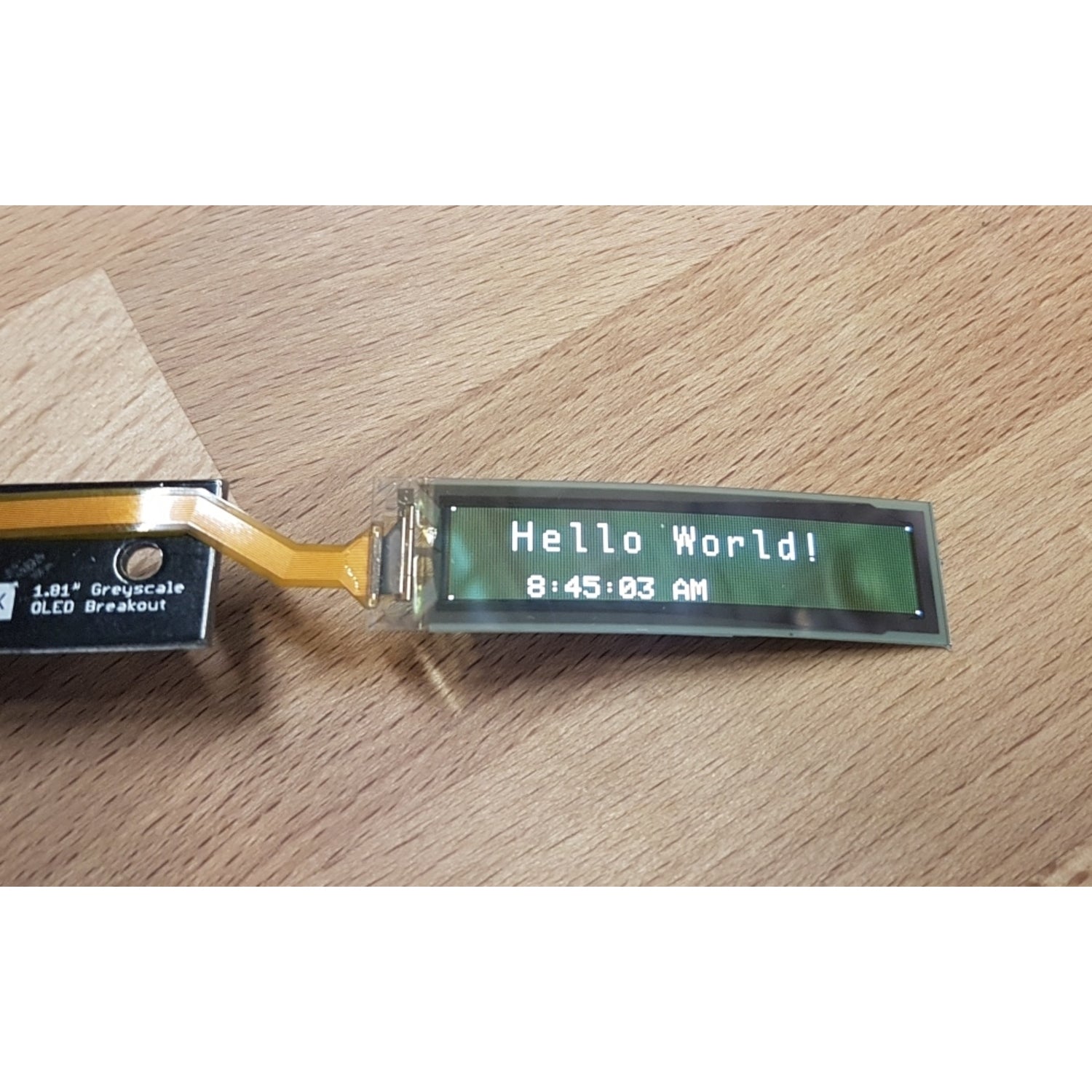This is an amazing small flexible grayscale OLED display. Flexible displays have been talked about for years, and now it's here! Although you can't fold it like paper, this Wisechip OLED can be bent to a 40mm radius without getting damaged. It's less than 0.5mm thick and weighs less than 0.5 grams, yet it can display some really cool graphics with great contrast. The 1.81 - inch display has 160x32 4 - bit grayscale pixels. Its 3 - wire SPI interface means each pixel needs 4 bits. You'll need a processor that can store a local array of 2,560 bytes to fully use the power of this grayscale display. Basic 8 - bit Arduinos can talk to the display for simple tasks like showing text, but graphics might be a bit hard. The carrier board generates the 12V needed to drive the OLED. It also has a signal buffer, so you can use any 3.3V or 5V microcontroller. However, due to the TXB0104, you must power the board with 3.5V or more. We suggest using 5V to power the carrier board. We've ported the MicroOLED library, so you can print text in two sizes and use the neat 7 - segment number font. You can download the complete library from the Arduino library manager (search 'flexible oled'), and we've provided lots of examples to help you start. You can even contribute to making the library better!



Using this flexible grayscale OLED display is quite easy. First, make sure to power the carrier board with at least 3.5V, but we recommend using 5V. Connect it to your 3.3V or 5V microcontroller through the 3 - wire SPI interface. If you're using a basic 8 - bit Arduino, you can do simple things like showing text. For more complex graphics, you'll need a processor that can store a local array of 2,560 bytes. To get started, download the MicroOLED library from the Arduino library manager by searching 'flexible oled'. There are plenty of examples to help you learn. When handling the display, be gentle as although it can be bent to a 40mm radius, excessive force can still cause damage. Keep it in a clean and dry place to maintain its performance. If you want to improve the library, feel free to contribute and make it even better for everyone.